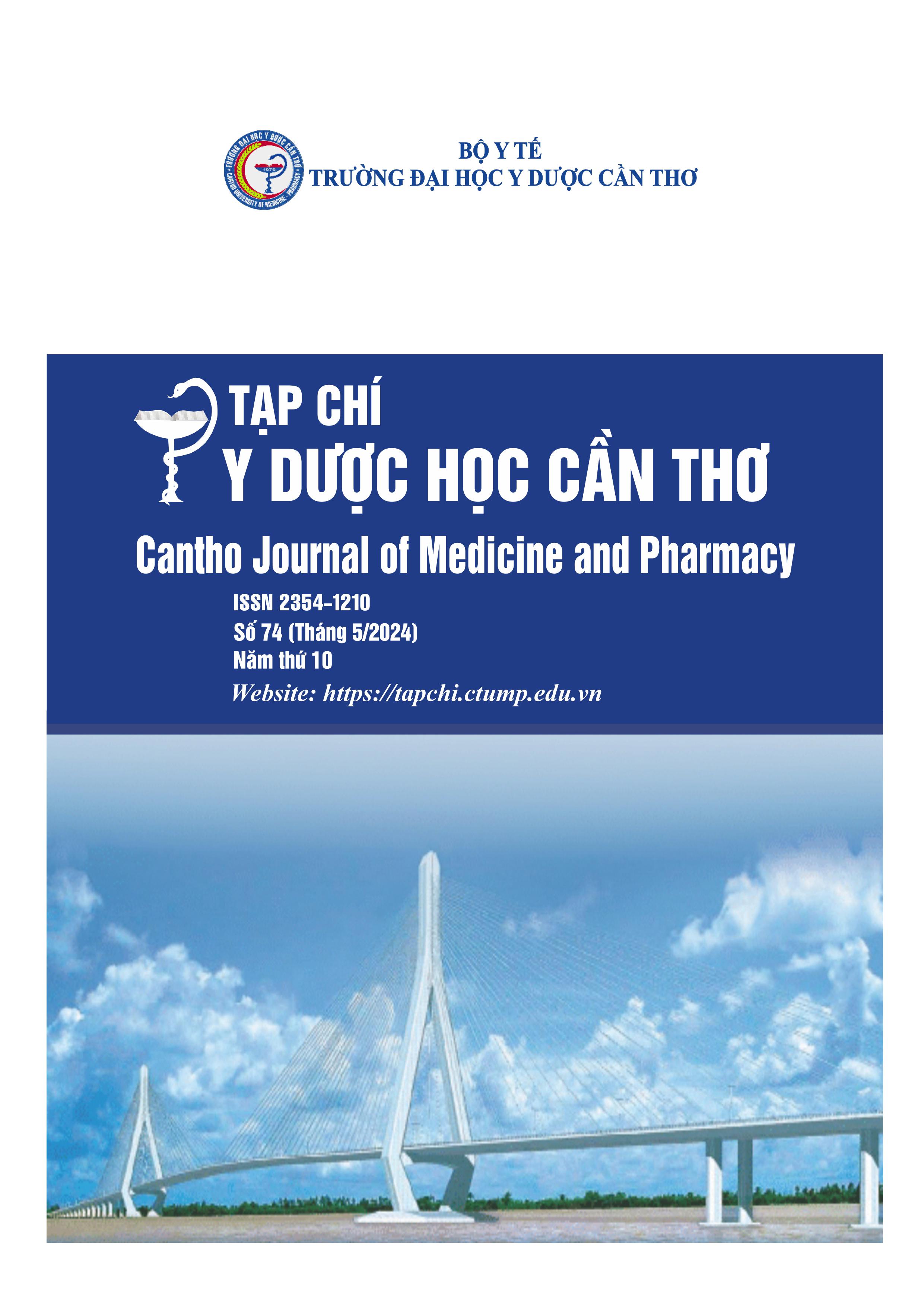A STUDY ON CLINICAL CHARACTERISTICS AND HEMATOLOGIC CHANGES OF CYANOTIC CONGENITAL HEART DISEASE IN CHILDREN
Main Article Content
Abstract
Background: Cyanotic congenital heart disease is a group of heart diseases with rapid and severe progression, which can cause early death from the first months after birth if not operated on in time. Children often die from serious complications such as cyanotic spells, brain abscesses, severe pulmonary hypertension, infective endocarditis, and heart failure. Objectives: 1. To describe clinical features and several hematologic changes of cyanotic congenital heart disease in children; 2. To determine the relevance between the level of hypoxemia and some changes in total blood count. Materials and methods: A cross-sectional descriptive study was conducted on 53 patients from 0 month to 15 years of age were diagnosed with cyanotic heart disease and admitted to Pediatric Center - Hue Central Hospital from April 2019 to April 2020. Results: The most frequent symptoms and signs were failure to thrive (75.5%) and systolic murmur (77.4%). The most common complications were malnutrition and cyanotic spells, with rates of 50.9% and 22.6%, respectively. 67.9% of patients had polycythemia, 37.7% had elevated Hematocrit, and 15.1% had thrombocytopenia. There is an association between the saturation of peripheral oxygen below 80% and thrombocytopenia, and elevated Hematocrit. Conclusions: Cyanotic heart diseases cause many complications; the most common are malnutrition and cyanotic spells. There is a significant association between severe cyanosis (oxygen saturation below 80%) and thrombocytopenia, and elevated Hematocrit.
Article Details
Keywords
Clinical, cyanotic heart disease, polycythemia, thrombocytopenia
References
2. Bernstein D. Congenital Heart Disease. Nelson Textbook of Peadiatrics. 20 ed2016. 2182-249.
3. Park MK, Salamat M. Cyanotic Congenital Heart Defects. Park's pediatric cardiology for practitioners. 7 ed: Elsevier. 2021.
4. Đỗ Trung Phấn. Các giá trị sinh học về tế bào máu ngoại vi. Các giá trị sinh học người Việt Nam bình thường thập kỷ 90 - thế kỷ 20. NXB Y học. 2003. 74-5.
5. Hoàng Thị Yến Nhi. Nghiên cứu đặc điểm lâm sàng, cận lâm sàng, nồng độ sắt và ferritin huyết thanh trong bệnh tim bẩm sinh tím ở trẻ em. Luận văn Bác sĩ nội trú. Đại học Y-Dược, Đại học Huế. 2019.
6. Varma A, Sharma V, Damke S, Meshram RJ, Kher A, Vagha J. Clinical Presentation of Cyanotic Congenital Heart Diseases in the Pediatric Population. Journal of Datta Meghe Institute of Medical Sciences University. 2020. 15, 7-11, doi: 10.4103/jdmimsu.jdmimsu_74_18.
7. Elshazali HOH, Elshazali OH, Elshazali H. The relationship between birth weight and congenital heart disease at Ahmed Gasim Cardiac Centre, Bahri, Sudan. Sudan J Paediatr. 2017. 17(2), 49-55, doi:10.24911/sjp.2017.2.6.
8. Tseng SY, Gao Z, Kalfa TA, Ollberding NJ, Tabbah S, Keller R, et al. Altered erythropoiesis in newborns with congenital heart disease. Pediatr Res. 2022. 91(3), 606-11, doi:10.1038/s41390021-01370-4.
9. Phan Hùng Việt. Bệnh tim bẩm sinh. In: Bùi Bỉnh Bảo Sơn, editor. Giáo trình Nhi khoa. Huế: NXB Đại học Huế. 2022.
10. Murni IK, Wirawan MT, Patmasari L, Esta R. Sativa NA, Nugroho S, Noormanto. Delayed diagnosis in children with congenital heart disease: a mixed-method study. BMC pediatrics. 2021. 21, https://doi.org/10.1186/s12887-021-02667-3.
11. Nguyễn Thị Tường Vi. Nghiên cứu đặc điểm lâm sàng và cận lâm sàng bệnh tim bẩm sinh tím tại khoa Nhi bệnh viện Trung ương Huế. Luận văn Thạc sỹ BSNT. Trường đại học Y Dược - Đại học Huế. 2013.
12. Lill MC, Perloff JK, Child JS. Pathogenesis of thrombocytopenia in cyanotic congenital heart disease Am J Cardiol. 2006. 98, 254-8, doi: 10.1016/j.amjcard.2006.01.083.
13. Patil S, Relan J, Hote M, Kothari SS. Severe thrombocytopenia in tetralogy of Fallot patients: A contraindication for corrective surgery?. Annals of Pediatric Cardiology. 2019. 12(3), 305-7, doi: 10.4103/apc.APC_71_18.
14. Gross S., Keefer V., Liebman J. The platelets in cyanotic congenital heart disease. Pediatrics. 1968. 42, 651-8, PMID: 5681283.


